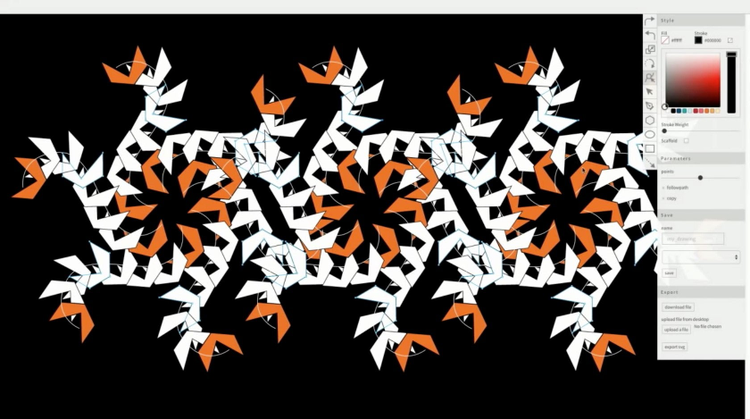At the Intersection of Art and Software


http://blogs.adobe.com/conversations/files/2015/04/Project-Para.jpg
There’s an intimate relationship between artists and their tools. After all, tools are an extension of the human body and intention to create. When mastered, tools help enable new levels of creativity and expression. Of course, they can also get in the way of the creative impulse. Using the wrong tool — or using tools poorly — can serve as a gating function for what is possible to achieve or even what an artist might attempt.
It’s a challenge Adobe faces daily: How can we use the power of computing to provide digital artists with new possibilities and new forms of creative expression in a way that is natural, intuitive and liberating?
One answer can be found in Project Para, a concept demonstration out of Adobe Research (in collaboration with the MIT Media Lab) that gives digital artists the ability to create beautiful, complex parametric designs without having to master textual programming, formal math or geometry.
Project Para was showcased at Adobe MAX 2014 by Jennifer Jacobs, a Ph.D. student from the MIT Media Lab and intern in the Adobe Creative Technologies Lab.
The motivation for Para originates from her experiences while earning a degree in fine arts and working with tools like ActionScript and the Arduino platform. “I noticed that a lot of my peers in the MFA program were struggling to learn programming,” she says, “So I applied to the Media Lab to explore ways of building better programming tools for artists.”
Para allows artists to create dynamic relationships between different objects in their artwork and automatically maintain those relationships as the composition is edited — similar to the way parametric computer aided design (CAD) software works. “For example, if you’re designing a chair you might say that the four legs have to be on the four corners of the seat of the chair, and as you change the size of the seat, the legs will automatically move to the correct place… the same principle is relevant to anybody who’s interested in creating visual forms that have relationships to one another,” Jennifer explains.
With Project Para, it’s easy to create shapes and define parametric relationships inside a familiar vector-drawing interface. The visual feedback in Para is immediate, making it easy for artists to see how changes to a single shape will affect the design as a whole. More broadly, Para enables artists to create drawings that are dynamic, with the ability to explore multiple designs in a single canvas. “It gives artists access to computational abstractions and the ability to create really complex designs and illustrations out of a single basic artistic form,” Jennifer adds, “It allows the artist to think about drawing something not just as a single piece, but as a system of possibilities.”
A prototype of Project Para is available to use at http://paradrawing.com and it continues to improve at the MIT Media Lab. “We’re working on a second version that gives the artist even more control, new features, and the ability to create several new relationships between objects,” Jennifer reveals.

http://blogs.adobe.com/conversations/files/2015/04/project-para2.jpg
Further into the future, Jennifer is looking forward to advancing her work with Para at Adobe, “There are a lot of similarities between the culture of the MIT Media Lab and the Adobe Creative Technology Labs. They both have a lot of bright, creative people who are passionate about what they do and excited about making tools for people. It feels to me like a specialized home away from home,” she explains.
One of the things she is most interested in exploring is bringing the capabilities of Project Para to animation software. “As we’ve observed artists use Project Para, one of the things we discovered is that the animation of the effects as artists altered their designs was compelling in its own right. It got us thinking about designing a tool for time-based animation as well.”